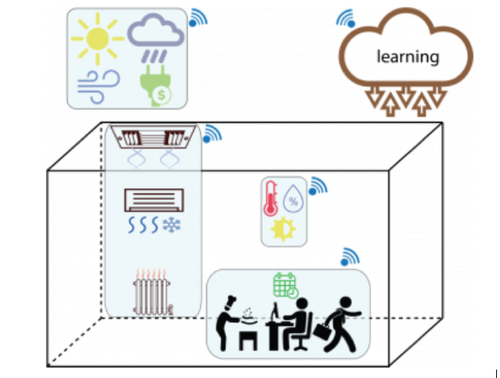Making Smart Thermostats More Efficient

Buildings account for about 40% of US energy consumption, and are responsible for one-third of global carbon dioxide emissions. Making buildings more energy-efficient is not only a cost-saving measure, but a crucial climate change mitigation strategy. Hence the rise of ‘smart’ buildings, which are increasingly becoming the norm around the world. Smart buildings automate systems like heating, ventilation, and air conditioning (HVAC), lighting, electricity, and security. Automation requires sensory data, such as indoor and outdoor temperature and humidity, carbon dioxide concentration, and occupancy status. Smart buildings leverage data in a combination of technologies that can make them more energy-efficient.
Since HVAC systems account for nearly half of a building’s energy use, smart buildings use smart thermostats, which automate HVAC controls and can learn the temperature preferences of a building’s occupants. “Despite recent advances in Internet of Things technology and data analytics, implementation of smart buildings is impeded by the time-consuming process of data acquisition in buildings,” says co-author Munther Dahleh, professor of Electrical Engineering and Computer Science and director of the Institute for Data, Systems, and Society (IDSS). Smart thermostat algorithms use building data to learn how to operate optimally, but the data can take months to collect. To speed up the learning process, the researchers used a method called manifold learning, where complex and ‘high-dimensional’ functions are represented by simpler and lower-dimensional functions called ‘manifolds.
For more, please click here.

Professor Munther Dahleh
